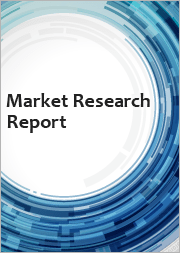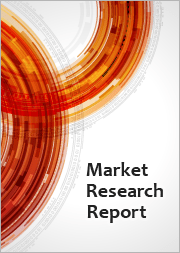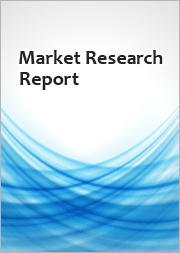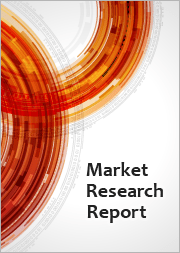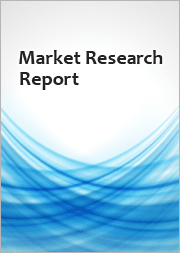
|
시장보고서
상품코드
1765134
세계의 석유 및 가스 클라우드 애플리케이션 시장Oil and Gas Cloud Applications |
||||||
석유 및 가스 클라우드 애플리케이션 세계 시장은 2030년까지 292억 달러에 이를 전망
2024년에 135억 달러로 추정되는 석유 및 가스 클라우드 애플리케이션 세계 시장은 2024-2030년 CAGR 13.7%로 성장하여 2030년에는 292억 달러에 이를 것으로 예측됩니다. 본 보고서에서 분석한 부문 중 하나인 솔루션은 CAGR 13.2%를 나타내고, 분석 기간 종료시에는 193억 달러에 이를 것으로 예측됩니다. 서비스 분야의 성장률은 분석 기간 CAGR로 14.8%로 추정됩니다.
미국 시장은 37억 달러로 추정, 중국은 CAGR13.1%로 성장 예측
미국의 석유 및 가스 클라우드 애플리케이션 시장은 2024년에 37억 달러로 추정됩니다. 세계 2위 경제대국인 중국은 2030년까지 45억 달러 규모에 이를 것으로 예측되며, 분석 기간인 2024-2030년 CAGR은 13.1%로 추정됩니다. 기타 주목해야 할 지역별 시장으로서는 일본과 캐나다가 있으며, 분석 기간중 CAGR은 각각 11.7%와 11.5%를 보일 것으로 예측됩니다. 유럽에서는 독일이 CAGR 10.1%를 보일 전망입니다.
세계 석유 및 가스 클라우드 애플리케이션 시장 - 주요 동향 및 촉진요인 정리
석유-가스 클라우드 애플리케이션이란 무엇이며, 왜 필요한가?
석유 및 가스 클라우드 애플리케이션는 석유 및 가스 밸류체인 전반에 걸쳐 데이터를 관리, 저장 및 처리하기 위해 클라우드 컴퓨팅 기술을 사용하는 것을 말합니다. 이러한 용도는 탐사, 생산, 정제, 유통 등 다양한 업무에 확장 가능하고 안전하며 비용 효율적인 솔루션을 제공합니다. 클라우드 플랫폼을 통해 기업은 센서, IoT 기기, 장비에서 생성되는 방대한 양의 데이터를 분석하여 실시간 의사결정을 촉진하고 업무 효율성을 최적화할 수 있습니다. 클라우드 애플리케이션를 활용하면 석유 및 가스 기업은 IT 인프라 비용을 절감하면서 협업 개선, 다운타임 감소, 자산 관리 강화, 전반적인 생산성 향상을 실현할 수 있습니다.
석유-가스 클라우드 애플리케이션 시장을 형성하고 있는 동향은?
몇 가지 트렌드가 석유 및 가스 클라우드 애플리케이션의 성장을 가속하고 있습니다. 석유 및 가스 산업의 디지털 전환은 중요한 트렌드이며, 기업들은 운영 현대화 및 경쟁력 유지를 위해 클라우드 기반 솔루션을 채택하는 경향이 증가하고 있습니다. 실시간 데이터 분석과 의사결정의 필요성이 원격 모니터링, 예지보전, 생산 최적화를 제공하는 클라우드 애플리케이션에 대한 수요를 촉진하고 있습니다. 또 다른 큰 트렌드는 클라우드 플랫폼과 AI, 머신러닝, IoT와 같은 첨단 기술과의 통합으로, 기업은 대규모 데이터 세트를 효율적으로 처리하고 분석할 수 있게 됩니다. 지속가능성과 탄소 발자국을 줄이려는 움직임도 클라우드 도입에 영향을 미치고 있으며, 기업들은 이러한 용도를 사용하여 배출량을 모니터링하고, 에너지 소비를 최적화하며, 환경 규제 준수를 강화하기 위해 노력하고 있습니다. 또한, 퍼블릭 클라우드와 프라이빗 클라우드를 결합한 하이브리드 클라우드 모델의 등장으로 데이터 관리를 위한 보다 유연하고 안전한 선택이 가능해졌습니다.
기술이 석유 및 가스 클라우드 애플리케이션에 어떤 혁명을 가져올 것인가?
AI와 머신러닝은 기업이 빅데이터의 힘을 활용하여 운영을 최적화하고, 다운타임을 줄이며, 안전성을 높일 수 있는 예측적 통찰력을 제공함으로써 석유 및 가스 클라우드 애플리케이션의 혁신의 최전선에 서 있습니다. 장비와 인프라에 내장된 IoT 장치와 센서는 방대한 양의 데이터를 생성하고, 클라우드 플랫폼은 이를 분석하여 자산 성능을 개선하고 위험을 최소화합니다. 엣지 컴퓨팅도 기술적 진보 중 하나로, 데이터 발생지와 더 가까운 곳에서 데이터를 처리할 수 있게 되어 대기 시간을 줄이고 원격지나 해외에서 실시간 의사결정을 내릴 수 있게 해줍니다. 블록체인 기술은 또한 공급망 전반에 걸쳐 안전하고 투명한 거래, 특히 거래 및 규제 준수를 위해 연구되고 있습니다. 또한, 암호화 및 다단계 인증을 포함한 클라우드 보안의 발전으로 데이터 보호가 향상되고 업계 표준을 준수할 수 있도록 보장하고 있습니다.
석유 및 가스 클라우드 애플리케이션 시장의 성장을 가속하는 요인은 무엇인가?
석유 및 가스 클라우드 애플리케이션 시장의 성장은 몇 가지 요인에 의해 주도되고 있습니다. 클라우드 애플리케이션는 고가의 IT 인프라의 필요성을 줄여주는 확장 가능한 솔루션을 제공하기 때문에 업무 효율성, 비용 절감, 실시간 데이터 분석에 대한 요구가 증가하고 있는 것이 주요 요인으로 작용하고 있습니다. 특히 해양 및 원격지에서의 석유 및 가스 운영이 복잡해지면서 원격 모니터링 및 예지보전을 가능하게 하는 클라우드 기반 솔루션에 대한 수요도 증가하고 있습니다. 지속가능성을 향한 업계의 움직임은 배출량 모니터링, 에너지 소비 최적화, 환경 규제 준수를 보장하기 위해 클라우드 플랫폼의 채택을 촉진하고 있습니다. 또한, AI, IoT, 머신러닝을 클라우드 애플리케이션에 통합하여 업무 효율성과 의사결정 능력을 향상시키고 있습니다. 마지막으로, 석유 및 가스 부문 전반에 걸친 디지털 전환의 부상으로 인해 빠르게 진화하는 산업에서 기업이 현대화하고 경쟁력을 유지하기 위해 클라우드 기술 채택이 가속화되고 있습니다.
부문
컴포넌트(솔루션, 서비스);오퍼레이션(Upstream, Midstream, Downstream)
조사 대상 기업 예
- Cisco Systems, Inc.
- Hewlett Packard Enterprise Development LP(HPE)
- IBM Corporation
- Microsoft Corporation
- Oracle Corporation
- PetroCloud, LLC.
- SAP SE
- SAS Institute, Inc.
- Seven Lakes Technologies
- Tableau Software, Inc.
- TIBCO Software Inc.
AI 통합
당사는 유효한 전문가 컨텐츠와 AI툴에 의해 시장 정보와 경쟁 정보를 변혁하고 있습니다.
Global Industry Analysts는 일반적인 LLM나 업계 고유 SLM에 쿼리-하는 대신에, 비디오 기록, 블로그, 검색 엔진 조사, 대량 기업, 제품/서비스, 시장 데이터 등, 전 세계 전문가로부터 수집한 컨텐츠 리포지토리를 구축했습니다.
관세 영향 계수
Global Industry Analysts는 본사의 국가, 제조거점, 수출입(완제품 및 OEM)을 기반으로 기업의 경쟁력 변화를 예측했습니다. 이러한 복잡하고 다면적인 시장 역학은 수익원가(COGS) 증가, 수익성 감소, 공급망 재편 등 미시적 및 거시적 시장 역학 중에서도 특히 경쟁사들에게 영향을 미칠 것으로 예측됩니다.
목차
제1장 조사 방법
제2장 주요 요약
- 시장 개요
- 주요 기업
- 시장 동향과 촉진요인
- 세계 시장 전망
제3장 시장 분석
- 미국
- 캐나다
- 일본
- 중국
- 유럽
- 프랑스
- 독일
- 이탈리아
- 영국
- 기타 유럽
- 아시아태평양
- 기타 지역
제4장 경쟁
LSH 25.07.15COMPANIES: 9
Global Oil and Gas Cloud Applications Market to Reach US$29.2 Billion by 2030
The global market for Oil and Gas Cloud Applications estimated at US$13.5 Billion in the year 2024, is expected to reach US$29.2 Billion by 2030, growing at a CAGR of 13.7% over the analysis period 2024-2030. Solutions, one of the segments analyzed in the report, is expected to record a 13.2% CAGR and reach US$19.3 Billion by the end of the analysis period. Growth in the Services segment is estimated at 14.8% CAGR over the analysis period.
The U.S. Market is Estimated at US$3.7 Billion While China is Forecast to Grow at 13.1% CAGR
The Oil and Gas Cloud Applications market in the U.S. is estimated at US$3.7 Billion in the year 2024. China, the world's second largest economy, is forecast to reach a projected market size of US$4.5 Billion by the year 2030 trailing a CAGR of 13.1% over the analysis period 2024-2030. Among the other noteworthy geographic markets are Japan and Canada, each forecast to grow at a CAGR of 11.7% and 11.5% respectively over the analysis period. Within Europe, Germany is forecast to grow at approximately 10.1% CAGR.
Global Oil and Gas Cloud Applications Market - Key Trends & Drivers Summarized
What are Oil and Gas Cloud Applications and Why are They Essential?
Oil and gas cloud applications refer to the use of cloud computing technologies to manage, store, and process data across the oil and gas value chain. These applications provide scalable, secure, and cost-effective solutions for various operations such as exploration, production, refining, and distribution. Cloud platforms allow companies to analyze vast amounts of data generated from sensors, IoT devices, and equipment, facilitating real-time decision-making and optimizing operational efficiency. By leveraging cloud applications, oil and gas companies can improve collaboration, reduce downtime, enhance asset management, and increase overall productivity, all while reducing IT infrastructure costs.
What Trends are Shaping the Oil and Gas Cloud Applications Market?
Several trends are driving the growth of oil and gas cloud applications. The digital transformation of the oil and gas industry is a key trend, with companies increasingly adopting cloud-based solutions to modernize operations and remain competitive. The need for real-time data analysis and decision-making is fueling the demand for cloud applications that offer remote monitoring, predictive maintenance, and production optimization. Another significant trend is the integration of cloud platforms with advanced technologies like AI, machine learning, and IoT, enabling companies to process and analyze large data sets efficiently. The push towards sustainability and reducing carbon footprints is also influencing cloud adoption, as companies use these applications to monitor emissions, optimize energy consumption, and enhance compliance with environmental regulations. Additionally, the rise of hybrid cloud models, which combine public and private clouds, is providing more flexible and secure options for data management.
How is Technology Revolutionizing Oil and Gas Cloud Applications?
Technology is at the forefront of the transformation in oil and gas cloud applications. AI and machine learning are enabling companies to harness the power of big data, offering predictive insights that optimize operations, reduce downtime, and enhance safety. IoT devices and sensors embedded in equipment and infrastructure generate vast amounts of data, which cloud platforms analyze to improve asset performance and minimize risks. Edge computing is another technological advancement, allowing data to be processed closer to the source, reducing latency and enabling real-time decision-making in remote or offshore locations. Blockchain technology is also being explored for secure, transparent transactions across the supply chain, particularly in trading and regulatory compliance. Additionally, advancements in cloud security, including encryption and multi-factor authentication, are improving data protection and ensuring compliance with industry standards.
What Factors are Driving the Growth of the Oil and Gas Cloud Applications Market?
The growth in the oil and gas cloud applications market is driven by several factors. The increasing need for operational efficiency, cost reduction, and real-time data analysis is a major driver, as cloud applications offer scalable solutions that reduce the need for expensive IT infrastructure. The growing complexity of oil and gas operations, particularly in offshore and remote locations, is also fueling demand for cloud-based solutions that enable remote monitoring and predictive maintenance. The industry’s push towards sustainability is encouraging the adoption of cloud platforms to monitor emissions, optimize energy consumption, and ensure compliance with environmental regulations. Additionally, the integration of AI, IoT, and machine learning into cloud applications is enhancing operational efficiency and decision-making capabilities. Finally, the rise of digital transformation across the oil and gas sector is accelerating the adoption of cloud technologies, as companies seek to modernize and remain competitive in a rapidly evolving industry.
SCOPE OF STUDY:
The report analyzes the Oil and Gas Cloud Applications market in terms of units by the following Segments, and Geographic Regions/Countries:
Segments:
Component (Solutions, Services); Operation (Upstream, Midstream, Downstream)
Geographic Regions/Countries:
World; United States; Canada; Japan; China; Europe (France; Germany; Italy; United Kingdom; and Rest of Europe); Asia-Pacific; Rest of World.
Select Competitors (Total 9 Featured) -
- Cisco Systems, Inc.
- Hewlett Packard Enterprise Development LP (HPE)
- IBM Corporation
- Microsoft Corporation
- Oracle Corporation
- PetroCloud, LLC.
- SAP SE
- SAS Institute, Inc.
- Seven Lakes Technologies
- Tableau Software, Inc.
- TIBCO Software Inc.
AI INTEGRATIONS
We're transforming market and competitive intelligence with validated expert content and AI tools.
Instead of following the general norm of querying LLMs and Industry-specific SLMs, we built repositories of content curated from domain experts worldwide including video transcripts, blogs, search engines research, and massive amounts of enterprise, product/service, and market data.
TARIFF IMPACT FACTOR
Our new release incorporates impact of tariffs on geographical markets as we predict a shift in competitiveness of companies based on HQ country, manufacturing base, exports and imports (finished goods and OEM). This intricate and multifaceted market reality will impact competitors by increasing the Cost of Goods Sold (COGS), reducing profitability, reconfiguring supply chains, amongst other micro and macro market dynamics.
TABLE OF CONTENTS
I. METHODOLOGY
II. EXECUTIVE SUMMARY
- 1. MARKET OVERVIEW
- Influencer Market Insights
- Tariff Impact on Global Supply Chain Patterns
- Global Economic Update
- Oil and Gas Cloud Applications - Global Key Competitors Percentage Market Share in 2025 (E)
- Competitive Market Presence - Strong/Active/Niche/Trivial for Players Worldwide in 2025 (E)
- 2. FOCUS ON SELECT PLAYERS
- 3. MARKET TRENDS & DRIVERS
- Increasing Focus on Digital Transformation Drives Growth in Oil and Gas Cloud Applications
- Rising Adoption of Cloud-Based Data Management Solutions Propels Growth in Real-Time Monitoring and Analysis in Oil and Gas
- Growing Use of Cloud Applications for Enhancing Operational Efficiency Expands Opportunities in Oil and Gas Industry
- Technological Innovations in AI and Machine Learning Propel Market Growth in Cloud-Based Predictive Analytics Solutions
- Increasing Focus on Remote Operations and Asset Management Drives Demand for Cloud Solutions in Oil and Gas
- Rising Adoption of Cloud-Based SCADA Systems Strengthens Market for Real-Time Control and Automation in Oilfields
- Expansion of Digital Oilfields Fuels Demand for Integrated Cloud Platforms in Exploration and Production (E&P)
- Growing Focus on Cybersecurity and Data Privacy Drives Demand for Secure Cloud Applications in Oil and Gas
- Technological Advancements in Edge Computing and Hybrid Cloud Solutions Propel Growth in Oil and Gas Cloud Applications
- Increasing Adoption of Cloud ERP Systems Strengthens Market for Integrated Supply Chain Management in Oil and Gas
- Rising Use of Cloud-Based Collaboration Tools Expands Opportunities for Remote Workforce Management in Oil and Gas
- Expansion of AI-Powered Cloud Applications for Enhanced Drilling and Production Optimization Fuels Market Growth
- 4. GLOBAL MARKET PERSPECTIVE
- TABLE 1: World Oil and Gas Cloud Applications Market Analysis of Annual Sales in US$ Million for Years 2015 through 2030
- TABLE 2: World Recent Past, Current & Future Analysis for Oil and Gas Cloud Applications by Geographic Region - USA, Canada, Japan, China, Europe, Asia-Pacific and Rest of World Markets - Independent Analysis of Annual Sales in US$ Million for Years 2024 through 2030 and % CAGR
- TABLE 3: World 6-Year Perspective for Oil and Gas Cloud Applications by Geographic Region - Percentage Breakdown of Value Sales for USA, Canada, Japan, China, Europe, Asia-Pacific and Rest of World Markets for Years 2025 & 2030
- TABLE 4: World Recent Past, Current & Future Analysis for Solutions by Geographic Region - USA, Canada, Japan, China, Europe, Asia-Pacific and Rest of World Markets - Independent Analysis of Annual Sales in US$ Million for Years 2024 through 2030 and % CAGR
- TABLE 5: World 6-Year Perspective for Solutions by Geographic Region - Percentage Breakdown of Value Sales for USA, Canada, Japan, China, Europe, Asia-Pacific and Rest of World for Years 2025 & 2030
- TABLE 6: World Recent Past, Current & Future Analysis for Services by Geographic Region - USA, Canada, Japan, China, Europe, Asia-Pacific and Rest of World Markets - Independent Analysis of Annual Sales in US$ Million for Years 2024 through 2030 and % CAGR
- TABLE 7: World 6-Year Perspective for Services by Geographic Region - Percentage Breakdown of Value Sales for USA, Canada, Japan, China, Europe, Asia-Pacific and Rest of World for Years 2025 & 2030
- TABLE 8: World Recent Past, Current & Future Analysis for Upstream by Geographic Region - USA, Canada, Japan, China, Europe, Asia-Pacific and Rest of World Markets - Independent Analysis of Annual Sales in US$ Million for Years 2024 through 2030 and % CAGR
- TABLE 9: World 6-Year Perspective for Upstream by Geographic Region - Percentage Breakdown of Value Sales for USA, Canada, Japan, China, Europe, Asia-Pacific and Rest of World for Years 2025 & 2030
- TABLE 10: World Recent Past, Current & Future Analysis for Midstream by Geographic Region - USA, Canada, Japan, China, Europe, Asia-Pacific and Rest of World Markets - Independent Analysis of Annual Sales in US$ Million for Years 2024 through 2030 and % CAGR
- TABLE 11: World 6-Year Perspective for Midstream by Geographic Region - Percentage Breakdown of Value Sales for USA, Canada, Japan, China, Europe, Asia-Pacific and Rest of World for Years 2025 & 2030
- TABLE 12: World Recent Past, Current & Future Analysis for Downstream by Geographic Region - USA, Canada, Japan, China, Europe, Asia-Pacific and Rest of World Markets - Independent Analysis of Annual Sales in US$ Million for Years 2024 through 2030 and % CAGR
- TABLE 13: World 6-Year Perspective for Downstream by Geographic Region - Percentage Breakdown of Value Sales for USA, Canada, Japan, China, Europe, Asia-Pacific and Rest of World for Years 2025 & 2030
III. MARKET ANALYSIS
- UNITED STATES
- Oil and Gas Cloud Applications Market Presence - Strong/Active/Niche/Trivial - Key Competitors in the United States for 2025 (E)
- TABLE 14: USA Recent Past, Current & Future Analysis for Oil and Gas Cloud Applications by Component - Solutions and Services - Independent Analysis of Annual Sales in US$ Million for the Years 2024 through 2030 and % CAGR
- TABLE 15: USA 6-Year Perspective for Oil and Gas Cloud Applications by Component - Percentage Breakdown of Value Sales for Solutions and Services for the Years 2025 & 2030
- TABLE 16: USA Recent Past, Current & Future Analysis for Oil and Gas Cloud Applications by Operation - Upstream, Midstream and Downstream - Independent Analysis of Annual Sales in US$ Million for the Years 2024 through 2030 and % CAGR
- TABLE 17: USA 6-Year Perspective for Oil and Gas Cloud Applications by Operation - Percentage Breakdown of Value Sales for Upstream, Midstream and Downstream for the Years 2025 & 2030
- CANADA
- TABLE 18: Canada Recent Past, Current & Future Analysis for Oil and Gas Cloud Applications by Component - Solutions and Services - Independent Analysis of Annual Sales in US$ Million for the Years 2024 through 2030 and % CAGR
- TABLE 19: Canada 6-Year Perspective for Oil and Gas Cloud Applications by Component - Percentage Breakdown of Value Sales for Solutions and Services for the Years 2025 & 2030
- TABLE 20: Canada Recent Past, Current & Future Analysis for Oil and Gas Cloud Applications by Operation - Upstream, Midstream and Downstream - Independent Analysis of Annual Sales in US$ Million for the Years 2024 through 2030 and % CAGR
- TABLE 21: Canada 6-Year Perspective for Oil and Gas Cloud Applications by Operation - Percentage Breakdown of Value Sales for Upstream, Midstream and Downstream for the Years 2025 & 2030
- JAPAN
- Oil and Gas Cloud Applications Market Presence - Strong/Active/Niche/Trivial - Key Competitors in Japan for 2025 (E)
- TABLE 22: Japan Recent Past, Current & Future Analysis for Oil and Gas Cloud Applications by Component - Solutions and Services - Independent Analysis of Annual Sales in US$ Million for the Years 2024 through 2030 and % CAGR
- TABLE 23: Japan 6-Year Perspective for Oil and Gas Cloud Applications by Component - Percentage Breakdown of Value Sales for Solutions and Services for the Years 2025 & 2030
- TABLE 24: Japan Recent Past, Current & Future Analysis for Oil and Gas Cloud Applications by Operation - Upstream, Midstream and Downstream - Independent Analysis of Annual Sales in US$ Million for the Years 2024 through 2030 and % CAGR
- TABLE 25: Japan 6-Year Perspective for Oil and Gas Cloud Applications by Operation - Percentage Breakdown of Value Sales for Upstream, Midstream and Downstream for the Years 2025 & 2030
- CHINA
- Oil and Gas Cloud Applications Market Presence - Strong/Active/Niche/Trivial - Key Competitors in China for 2025 (E)
- TABLE 26: China Recent Past, Current & Future Analysis for Oil and Gas Cloud Applications by Component - Solutions and Services - Independent Analysis of Annual Sales in US$ Million for the Years 2024 through 2030 and % CAGR
- TABLE 27: China 6-Year Perspective for Oil and Gas Cloud Applications by Component - Percentage Breakdown of Value Sales for Solutions and Services for the Years 2025 & 2030
- TABLE 28: China Recent Past, Current & Future Analysis for Oil and Gas Cloud Applications by Operation - Upstream, Midstream and Downstream - Independent Analysis of Annual Sales in US$ Million for the Years 2024 through 2030 and % CAGR
- TABLE 29: China 6-Year Perspective for Oil and Gas Cloud Applications by Operation - Percentage Breakdown of Value Sales for Upstream, Midstream and Downstream for the Years 2025 & 2030
- EUROPE
- Oil and Gas Cloud Applications Market Presence - Strong/Active/Niche/Trivial - Key Competitors in Europe for 2025 (E)
- TABLE 30: Europe Recent Past, Current & Future Analysis for Oil and Gas Cloud Applications by Geographic Region - France, Germany, Italy, UK and Rest of Europe Markets - Independent Analysis of Annual Sales in US$ Million for Years 2024 through 2030 and % CAGR
- TABLE 31: Europe 6-Year Perspective for Oil and Gas Cloud Applications by Geographic Region - Percentage Breakdown of Value Sales for France, Germany, Italy, UK and Rest of Europe Markets for Years 2025 & 2030
- TABLE 32: Europe Recent Past, Current & Future Analysis for Oil and Gas Cloud Applications by Component - Solutions and Services - Independent Analysis of Annual Sales in US$ Million for the Years 2024 through 2030 and % CAGR
- TABLE 33: Europe 6-Year Perspective for Oil and Gas Cloud Applications by Component - Percentage Breakdown of Value Sales for Solutions and Services for the Years 2025 & 2030
- TABLE 34: Europe Recent Past, Current & Future Analysis for Oil and Gas Cloud Applications by Operation - Upstream, Midstream and Downstream - Independent Analysis of Annual Sales in US$ Million for the Years 2024 through 2030 and % CAGR
- TABLE 35: Europe 6-Year Perspective for Oil and Gas Cloud Applications by Operation - Percentage Breakdown of Value Sales for Upstream, Midstream and Downstream for the Years 2025 & 2030
- FRANCE
- Oil and Gas Cloud Applications Market Presence - Strong/Active/Niche/Trivial - Key Competitors in France for 2025 (E)
- TABLE 36: France Recent Past, Current & Future Analysis for Oil and Gas Cloud Applications by Component - Solutions and Services - Independent Analysis of Annual Sales in US$ Million for the Years 2024 through 2030 and % CAGR
- TABLE 37: France 6-Year Perspective for Oil and Gas Cloud Applications by Component - Percentage Breakdown of Value Sales for Solutions and Services for the Years 2025 & 2030
- TABLE 38: France Recent Past, Current & Future Analysis for Oil and Gas Cloud Applications by Operation - Upstream, Midstream and Downstream - Independent Analysis of Annual Sales in US$ Million for the Years 2024 through 2030 and % CAGR
- TABLE 39: France 6-Year Perspective for Oil and Gas Cloud Applications by Operation - Percentage Breakdown of Value Sales for Upstream, Midstream and Downstream for the Years 2025 & 2030
- GERMANY
- Oil and Gas Cloud Applications Market Presence - Strong/Active/Niche/Trivial - Key Competitors in Germany for 2025 (E)
- TABLE 40: Germany Recent Past, Current & Future Analysis for Oil and Gas Cloud Applications by Component - Solutions and Services - Independent Analysis of Annual Sales in US$ Million for the Years 2024 through 2030 and % CAGR
- TABLE 41: Germany 6-Year Perspective for Oil and Gas Cloud Applications by Component - Percentage Breakdown of Value Sales for Solutions and Services for the Years 2025 & 2030
- TABLE 42: Germany Recent Past, Current & Future Analysis for Oil and Gas Cloud Applications by Operation - Upstream, Midstream and Downstream - Independent Analysis of Annual Sales in US$ Million for the Years 2024 through 2030 and % CAGR
- TABLE 43: Germany 6-Year Perspective for Oil and Gas Cloud Applications by Operation - Percentage Breakdown of Value Sales for Upstream, Midstream and Downstream for the Years 2025 & 2030
- ITALY
- TABLE 44: Italy Recent Past, Current & Future Analysis for Oil and Gas Cloud Applications by Component - Solutions and Services - Independent Analysis of Annual Sales in US$ Million for the Years 2024 through 2030 and % CAGR
- TABLE 45: Italy 6-Year Perspective for Oil and Gas Cloud Applications by Component - Percentage Breakdown of Value Sales for Solutions and Services for the Years 2025 & 2030
- TABLE 46: Italy Recent Past, Current & Future Analysis for Oil and Gas Cloud Applications by Operation - Upstream, Midstream and Downstream - Independent Analysis of Annual Sales in US$ Million for the Years 2024 through 2030 and % CAGR
- TABLE 47: Italy 6-Year Perspective for Oil and Gas Cloud Applications by Operation - Percentage Breakdown of Value Sales for Upstream, Midstream and Downstream for the Years 2025 & 2030
- UNITED KINGDOM
- Oil and Gas Cloud Applications Market Presence - Strong/Active/Niche/Trivial - Key Competitors in the United Kingdom for 2025 (E)
- TABLE 48: UK Recent Past, Current & Future Analysis for Oil and Gas Cloud Applications by Component - Solutions and Services - Independent Analysis of Annual Sales in US$ Million for the Years 2024 through 2030 and % CAGR
- TABLE 49: UK 6-Year Perspective for Oil and Gas Cloud Applications by Component - Percentage Breakdown of Value Sales for Solutions and Services for the Years 2025 & 2030
- TABLE 50: UK Recent Past, Current & Future Analysis for Oil and Gas Cloud Applications by Operation - Upstream, Midstream and Downstream - Independent Analysis of Annual Sales in US$ Million for the Years 2024 through 2030 and % CAGR
- TABLE 51: UK 6-Year Perspective for Oil and Gas Cloud Applications by Operation - Percentage Breakdown of Value Sales for Upstream, Midstream and Downstream for the Years 2025 & 2030
- REST OF EUROPE
- TABLE 52: Rest of Europe Recent Past, Current & Future Analysis for Oil and Gas Cloud Applications by Component - Solutions and Services - Independent Analysis of Annual Sales in US$ Million for the Years 2024 through 2030 and % CAGR
- TABLE 53: Rest of Europe 6-Year Perspective for Oil and Gas Cloud Applications by Component - Percentage Breakdown of Value Sales for Solutions and Services for the Years 2025 & 2030
- TABLE 54: Rest of Europe Recent Past, Current & Future Analysis for Oil and Gas Cloud Applications by Operation - Upstream, Midstream and Downstream - Independent Analysis of Annual Sales in US$ Million for the Years 2024 through 2030 and % CAGR
- TABLE 55: Rest of Europe 6-Year Perspective for Oil and Gas Cloud Applications by Operation - Percentage Breakdown of Value Sales for Upstream, Midstream and Downstream for the Years 2025 & 2030
- ASIA-PACIFIC
- Oil and Gas Cloud Applications Market Presence - Strong/Active/Niche/Trivial - Key Competitors in Asia-Pacific for 2025 (E)
- TABLE 56: Asia-Pacific Recent Past, Current & Future Analysis for Oil and Gas Cloud Applications by Component - Solutions and Services - Independent Analysis of Annual Sales in US$ Million for the Years 2024 through 2030 and % CAGR
- TABLE 57: Asia-Pacific 6-Year Perspective for Oil and Gas Cloud Applications by Component - Percentage Breakdown of Value Sales for Solutions and Services for the Years 2025 & 2030
- TABLE 58: Asia-Pacific Recent Past, Current & Future Analysis for Oil and Gas Cloud Applications by Operation - Upstream, Midstream and Downstream - Independent Analysis of Annual Sales in US$ Million for the Years 2024 through 2030 and % CAGR
- TABLE 59: Asia-Pacific 6-Year Perspective for Oil and Gas Cloud Applications by Operation - Percentage Breakdown of Value Sales for Upstream, Midstream and Downstream for the Years 2025 & 2030
- REST OF WORLD
- TABLE 60: Rest of World Recent Past, Current & Future Analysis for Oil and Gas Cloud Applications by Component - Solutions and Services - Independent Analysis of Annual Sales in US$ Million for the Years 2024 through 2030 and % CAGR
- TABLE 61: Rest of World 6-Year Perspective for Oil and Gas Cloud Applications by Component - Percentage Breakdown of Value Sales for Solutions and Services for the Years 2025 & 2030
- TABLE 62: Rest of World Recent Past, Current & Future Analysis for Oil and Gas Cloud Applications by Operation - Upstream, Midstream and Downstream - Independent Analysis of Annual Sales in US$ Million for the Years 2024 through 2030 and % CAGR
- TABLE 63: Rest of World 6-Year Perspective for Oil and Gas Cloud Applications by Operation - Percentage Breakdown of Value Sales for Upstream, Midstream and Downstream for the Years 2025 & 2030






